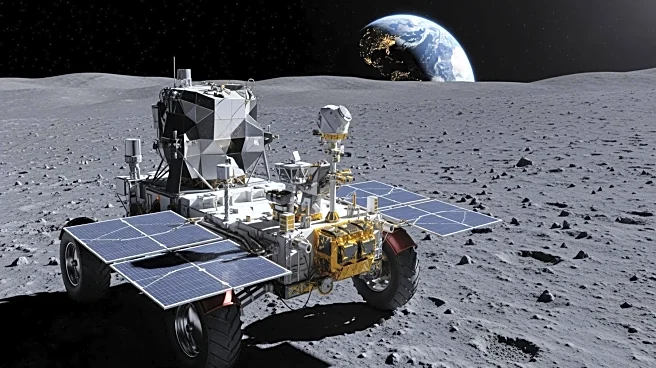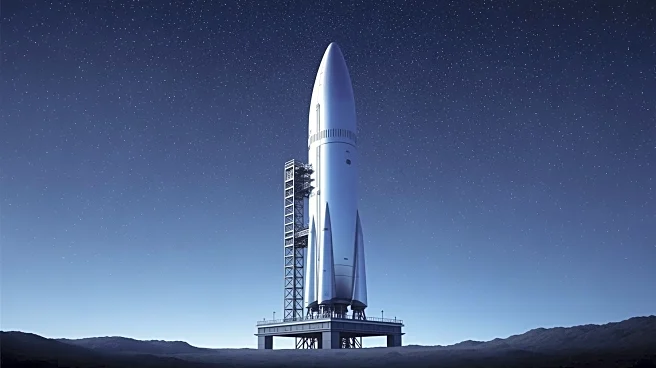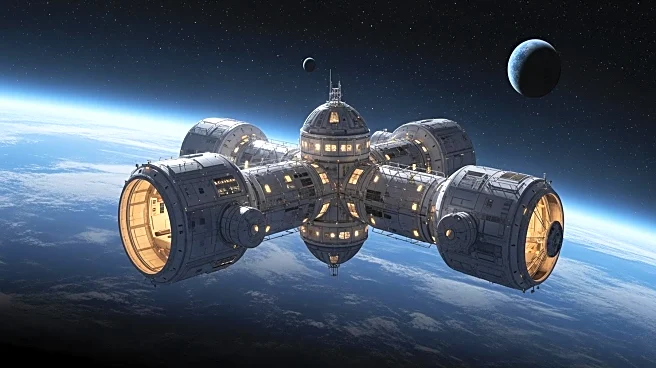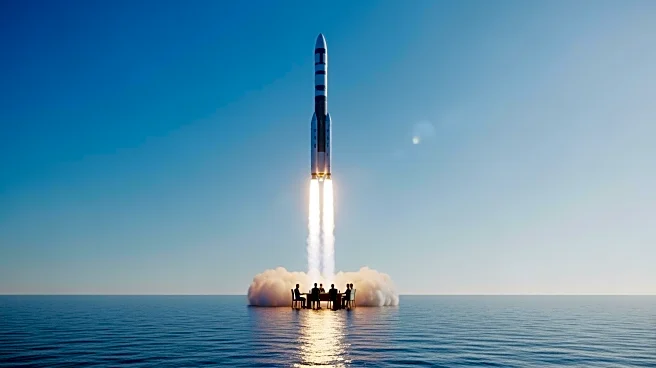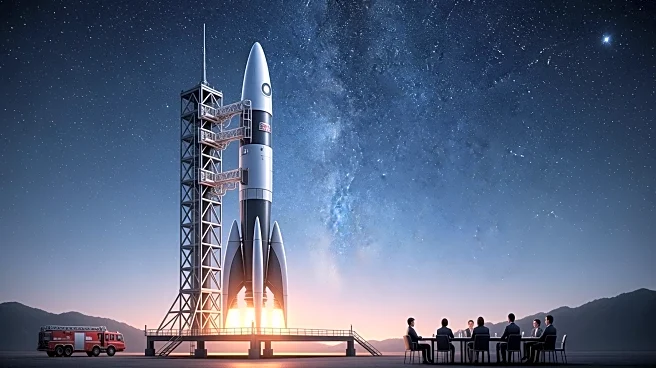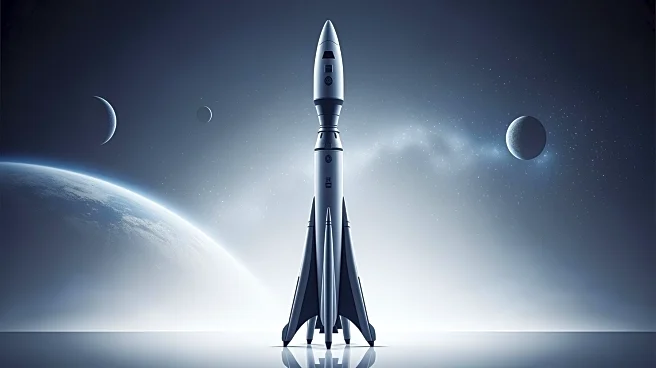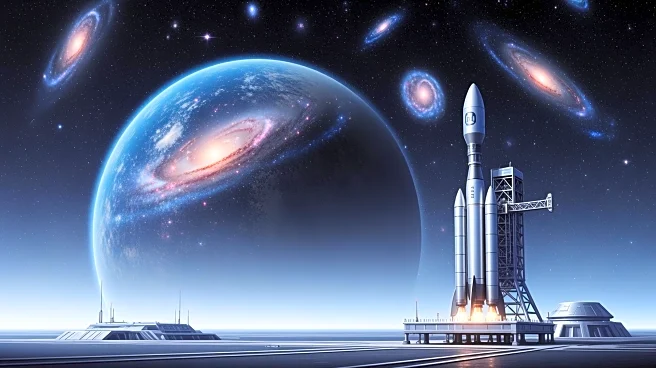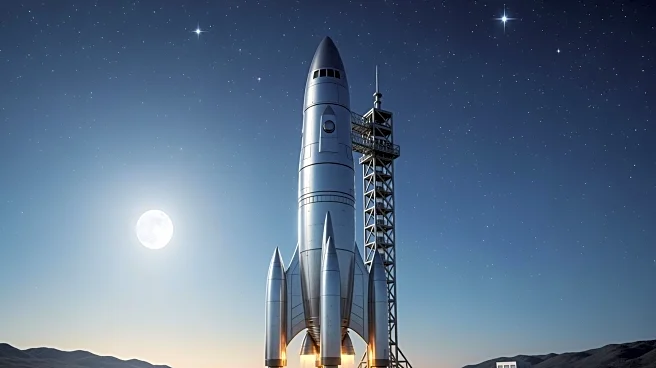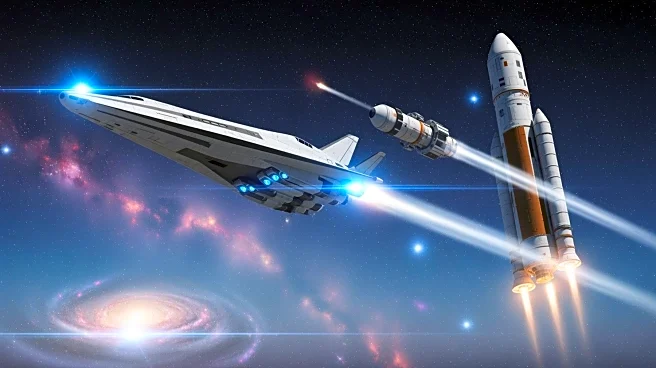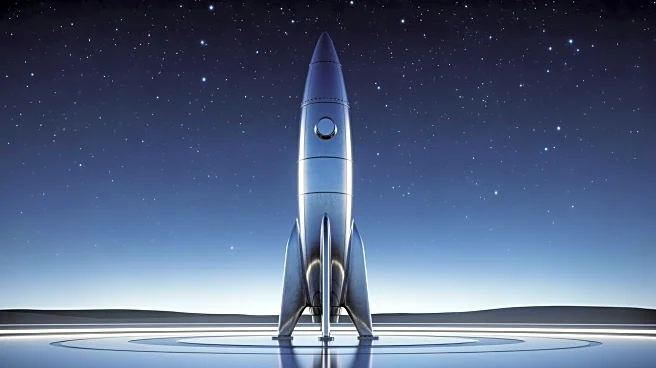What's Happening?
SpaceX is celebrating two consecutive Starship launches without unplanned explosions, marking progress in its ambitious lunar mission plans. However, the company faces significant hurdles before it can deliver astronauts to the lunar surface. Former NASA
administrator Jim Bridenstine expressed skepticism about the Starship's suitability for returning humans to the Moon, citing the complexity of the mission architecture compared to the Apollo program. The current plan involves multiple launches and refueling flights, which contrasts with Apollo's single-launch approach. Despite successful suborbital tests, SpaceX has yet to demonstrate critical capabilities such as reaching orbit and refueling in space, which are essential for the mission's success.
Why It's Important?
The development of SpaceX's Starship is crucial for NASA's lunar ambitions, as the agency plans to land astronauts on the Moon's south pole to access water ice deposits. The success of this mission could pave the way for future lunar exploration and potential colonization. However, the complexity and technical challenges of the Starship program raise concerns about its feasibility and timeline. If SpaceX can overcome these obstacles, it could revolutionize space travel and solidify its position as a leader in aerospace innovation. Failure to do so may delay NASA's lunar goals and impact the broader space exploration agenda.
What's Next?
SpaceX is expected to accelerate Starship testing in 2026 to meet NASA's requirements and achieve the goal of returning to the Moon before 2030. The company must address key technical challenges, including orbital refueling and safe lunar landing, to ensure the mission's success. NASA's commitment to the current approach means that SpaceX's progress will be closely monitored, and any delays could have significant implications for the timeline of lunar exploration. Stakeholders, including NASA and the aerospace industry, will be watching SpaceX's developments closely as they prepare for future missions.
Beyond the Headlines
The Starship program's challenges highlight the broader issues of space exploration, including budget constraints and the need for innovative solutions to complex problems. The comparison to the Apollo program underscores the evolution of space technology and the increasing complexity of modern missions. As SpaceX continues to develop its capabilities, the ethical and logistical considerations of lunar exploration will become more prominent, influencing future policy decisions and international collaboration in space.


